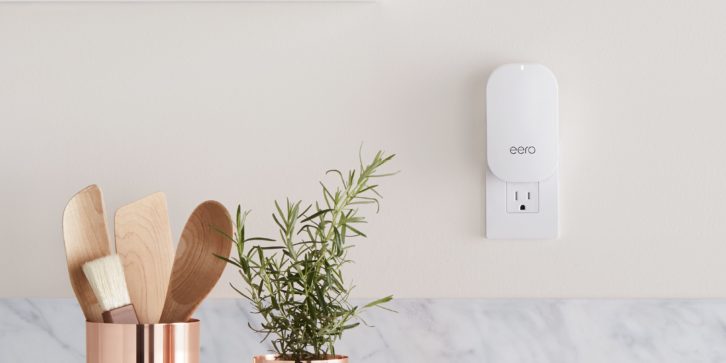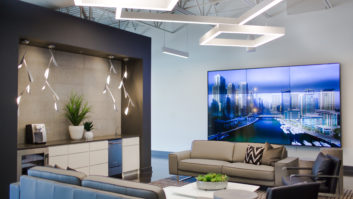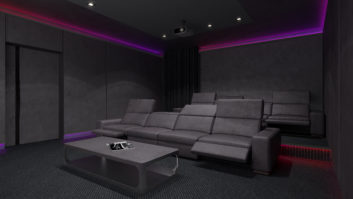
I remember being at CEDIA Expo two years ago and Mark dragged me over to the eero booth to take a look. He had been exposed to the product a year earlier at Expo and had been using it occasionally in retrofit projects, particularly when running new wire was not an option. I was very skeptical that a $200 consumer-grade device was going to have success in our industry. I didn’t believe they would even take our industry seriously. But then I started digging deeper.
eero was introducing its PoE adapter at that show — a key cost of entry for a pro-grade installation. It also had its Pro dashboard where, as a dealer, you can log in and see all of the systems you have installed, see what is online and offline, set configurations, and perform troubleshooting — all in one place. Then I learned about one of the most critical features — the eero can be configured in bridge mode so that it serves solely as an access point and can therefore work with our preferred router from Araknis.
Since that time, I tested eero at my own home to see how it performed and have been extremely satisfied. It even outperformed the professional-grade access points it replaced. Installation and configuration was a breeze and I haven’t had any issues. I spent time talking to Crestron engineers and had them evaluate eero for use in our deployments, and they found no issues and were impressed with how well it worked.
Related: What DIY Does Right
eero is now our go-to access point and is installed on every project. Paired with the PoE adapter (only sold through the custom channel), we get the same clean, unobtrusive look we are used to from traditional access points. Powered by PoE+, the adapter allows us to mount the eero Pro in the optimal locations for performance and aesthetics. We are still selling fully managed switches with full PoE to power the eeros, and we are experiencing much better performance, better handoffs, and significantly simplified setup and configuration. In a renovation or new-build situation, we always hard-wire every AP. But knowing that we have the flexibility to add additional APs on the mesh if need be, gives us piece of mind that our clients will always be covered.
My installers can easily set up a 6–8 access point (or more) system with just their smartphone and without the need for an experienced networking tech to be on site. It has increased our productivity and clients have been beyond happy with the results. We’ve installed hundreds of them without issue. and we probably have 100 in inventory ready to roll for upcoming work.
On a jobsite just this week, the contractor was asking me for advice about his home Wi-Fi. I went to the truck, pulled out three eeros and handed them to him. I said, “Let’s configure those now, so that when you get home all you have to do is plug them in.” He was blown away that we can have it configured in less than 10 minutes. I can’t wait to hear what he says when I see him next week.
Related: Working with Consumer-Grade Partners
Mark has been jealous. Being in New York City, most of our installs and Mark’s are in high-rise apartment buildings. The ceilings and floors are concrete slab, and there is no cellar or attic, so retrofitting wiring means holes every 14 inches to go through studs and repainting the entire apartment. In retrofit situations, clients usually are not willing to undertake that. This is where eero has excelled. He really likes how well eero works and how easy it is to setup, configure and maintain, but it has long been on the Control4 “Do Not Use” list for networking gear. In situations where Control4 was not being used, or it was just going to be a single-room solution and running wire was not an option, he would still use eero in bridge. He often had to scale back the Control4 installation, as having robust wireless coverage is much more important than anything else in the smart home. So Control4 would be sacrificed to get a client the network coverage they needed for day-to-day life.
He is so excited now that eero has been removed from the Control4 “Do Not Use” list. It seems Control4 is trying to be more agnostic as to the network gear they will work with. The “Do Not Use” list has shrunk considerably in the past year or so. This bodes well for past and future Control4 installations. Now the clients for whom network coverage was a priority and smart home had to take a back seat have the option to have a robust smart home solution as well. Control4 has always been among the leaders in working with third-party products on the control side, and now they are expanding that to the networking side of things. Kudos to Control4 and SnapAV for doing the right thing for the home owner and expanding the breadth of network solutions they will work with.







